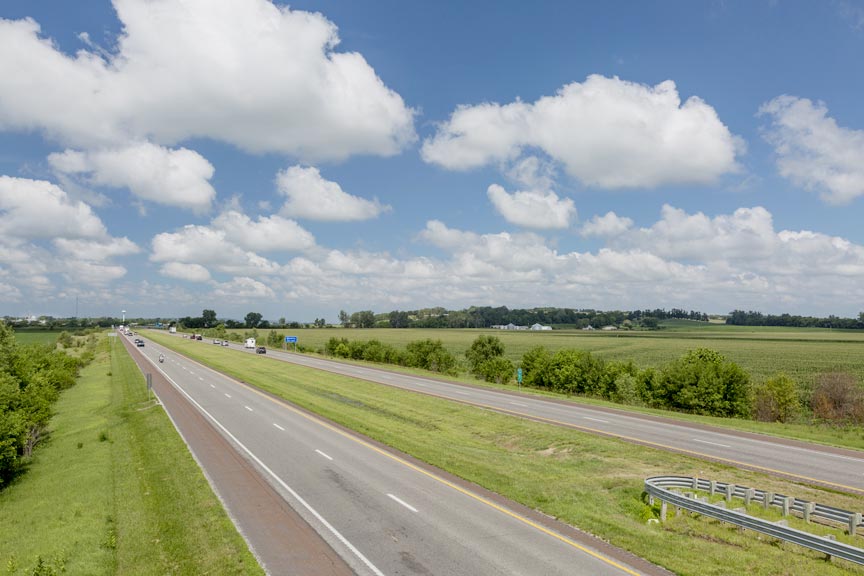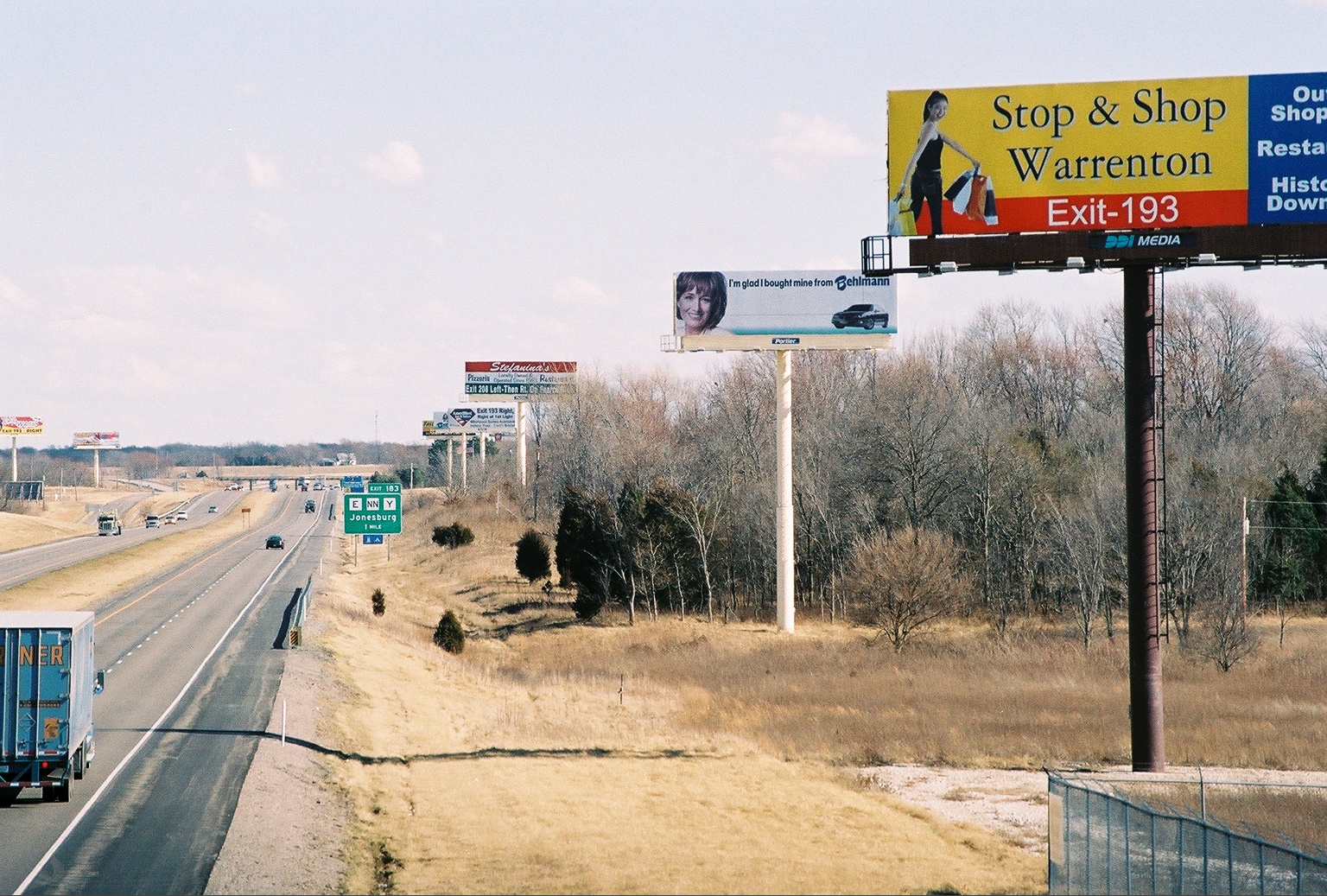In this section:
I want to make sure that the America we see from these major highways is a beautiful America.
In 1965, the Lyndon B. Johnson Administration took action to enhance the beauty of America’s roadways through the Highway Beautification Act (HBA), which was signed into law on October 22, 1965 (Public Law 89-285). The HBA sought to limit billboards, junkyards, and other visual clutter that impacted the appearance of interstate highways.
Known as “Lady Bird’s Law,” the HBA is the most comprehensive piece of national legislation ever passed regarding outdoor advertising control in America. However, the act and subsequent amendments have failed to adequately regulate billboards, so that these signs continue to blight roadways and communities across the country. Furthermore, many provisions of the HBA are poorly enforced, and other policy options are underutilized.
Because of the potential harm to property values caused by billboards located near homes, millions of homeowners have a material interest in making sure that they are regulated properly. Improved regulations and new policy tools are needed to stop billboards from harming America’s towns and landscapes.
President Johnson's Remarks
President Lyndon B. Johnson shared inspiring remarks after signing the Highway Beautification Act.
Purpose of the Highway Beautification Act
In the legislation, President Johnson called “for Congress to ‘mak[e] our road highways to the enjoyment of nature and beauty [so that] we can greatly enrich the life of nearly all our people in the city and countryside alike.”
In Title I of the Act, Congress explained:
“The Congress hereby finds and declares that the erection and maintenance of outdoor advertising signs, displays and devices in areas adjacent to the Interstate System and the primary system should be controlled in order to protect the public investment in such highways, to promote the safety and recreational value of public travel, and to preserve natural beauty.”
Title I of the law deals with outdoor advertising, while other sections of the law focus on junkyard control and landscaping and scenic enhancement of federal-aid highways.
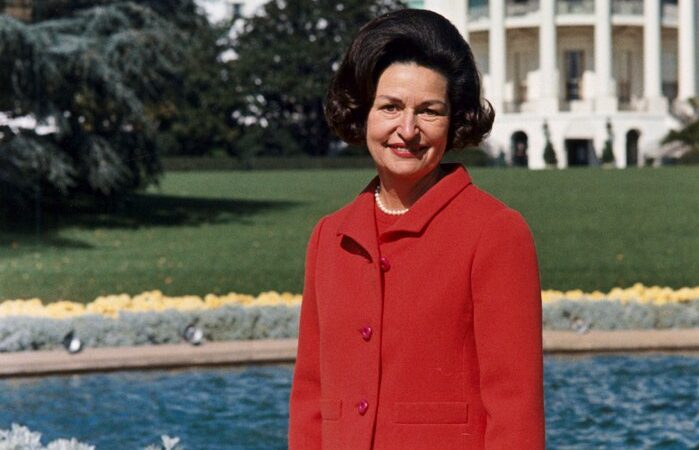
Lady Bird’s Law
A First Lady known for her interests in environmental causes and scenic beauty, Lady Bird Johnson championed the beautification effort and adopted the cause as her own. As she stated, “Ugliness is so grim. A little beauty, something that is lovely, I think, can help create harmony which will lessen tensions.”
Ugliness is so grim. A little beauty, something that is lovely, I think, can help create harmony which will lessen tensions.
In taking up the scenic highway cause, Mrs. Johnson built on the efforts of the National Roadside Council, which had emerged in the 1920s to battle billboards and other forms of visual blight popping up along the growing national road system. Made up primarily of women, the National Roadside Council lobbied the Outdoor Advertising Association of America for fewer billboards and more advertising restrictions. As Elizabeth Lawton, the driving force behind the National Roadside Council, stated, “beauty and the billboard cannot exist on the same landscape.”
The LBJ Presidential Library notes the importance of the law to both President and Lady Bird Johnson: “Just before the 1965 Congressional session ended, Johnson called his Cabinet and top staffers to a meeting. He admonished them, ‘The Congress is about ready to adjourn, and they haven’t passed Lady Bird’s Highway Beautification Act…Now, she wants that bill. And if she wants it, I want it, and by God, we’re going to pass it.’ The bill passed soon after.”
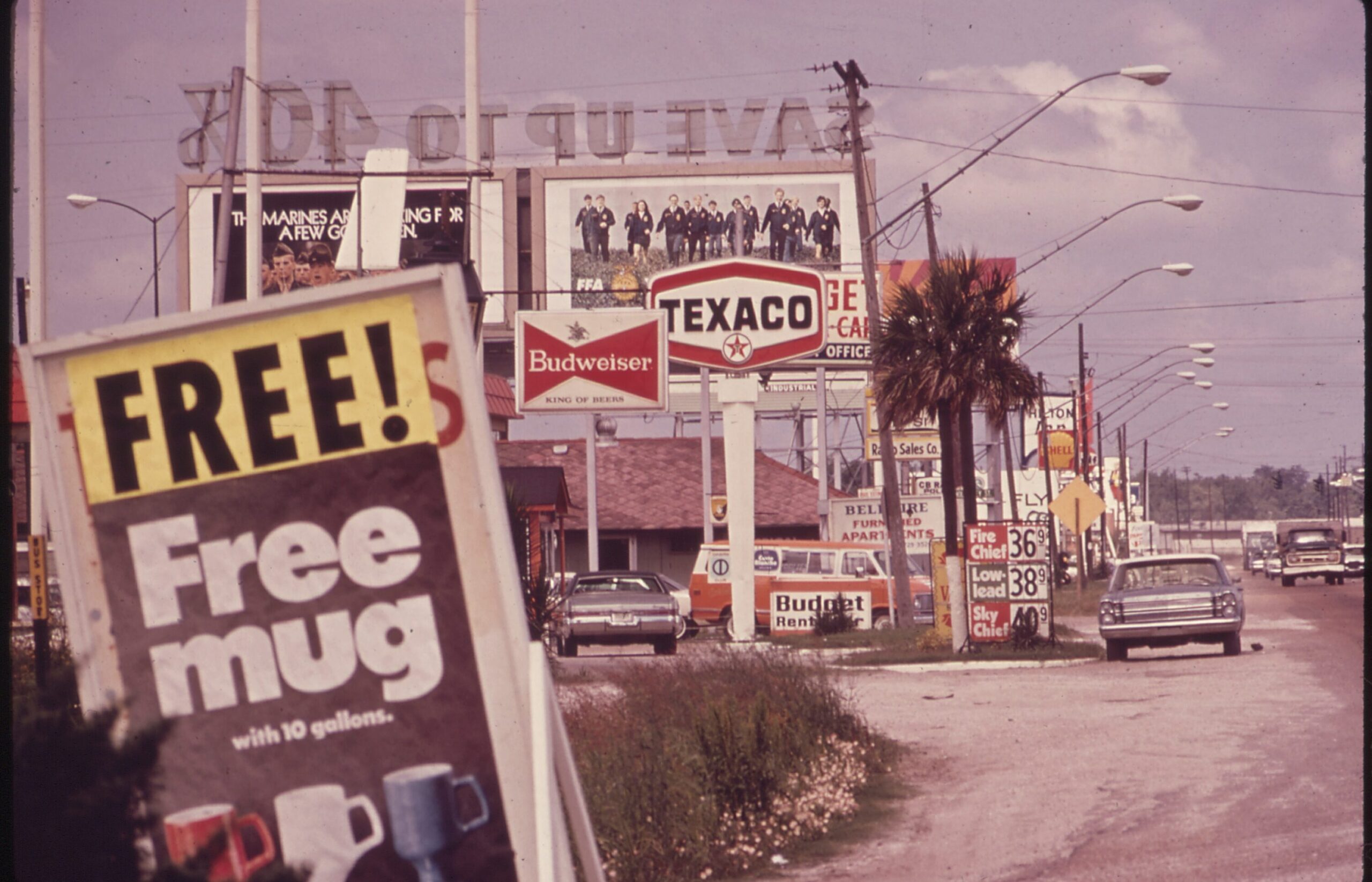
Objectives of the Highway Beautification Act
In effect, the HBA:
- Created an imaginary corridor around the Interstate System, extending 660 feet to each side, delineating the area in which states would control outdoor advertising.
- Established a 1968 deadline for ‘effective control’ of outdoor advertising and outlined financial penalties for states that failed to do so.
- Gave billboard operators a five-year grace period to continue operating non-conforming signs.
- Provided for logo signs on the Interstate System and for information centers in safety rest areas.
States that were subject to an earlier outdoor advertising control law called the Bonus Act (Public Law 85-381, April 16, 1958) were required to continue to control signs under both programs. Compensation was required for signs removed because of the HBA.
Implementation
In order to avoid a ten percent reduction in federal highway funds, states were required to provide for “effective control” of billboards by enacting adequate billboard control laws along federal-aid highways.
To comply with this mandate, states had to negotiate federal-state agreements (FSAs) that defined acceptable standards for billboard size, spacing, and lighting. This requirement limited the construction of new billboards and provided for the removal of pre-existing signs that violated the state’s FSA standards.
By mid-1970, only 32 states had enacted compliance laws with HBA, and only 18 were found to be in full compliance. To encourage more compliance, Congress provided substantial federal funds for billboard removal programs, and the Federal Highway Administrator put increasing pressure on recalcitrant states to adopt compliance laws. By 1972, only one state, South Dakota, was not found in compliance. South Dakota filed an unsuccessful suit against the Secretary of Transportation for withholding the funding.
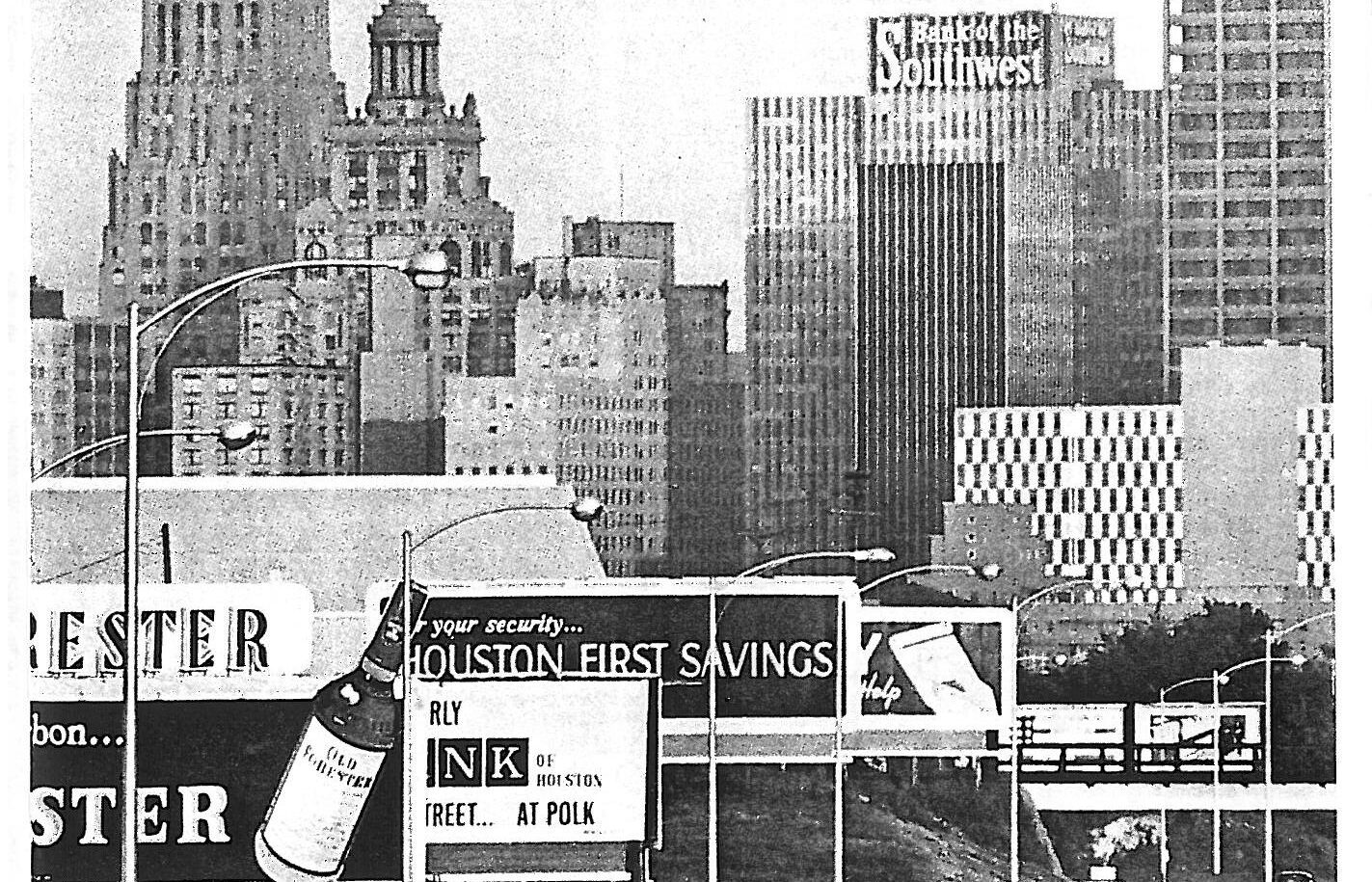
Issues with the Highway Beautification Act
Advocates of scenic conservation argue that the Highway Beautification Act falls short of the mark in establishing a legal framework for enforcing and policing the outdoor advertising industry.
Key issues and concerns include:
The HBA allows billboards to be erected virtually everywhere– in any commercial/industrial area adjacent to interstate and federal-aid primary highways.
However, the guidelines as to what constitutes commercial/industrial activity are extremely flexible and subject to interpretation. In many states, the sign law regulations would allow a single general store to erect six 1,200 square-foot billboards, a total of 7,200 square feet of advertising space. In many states, critics report that sign companies have used shell subsidiary businesses to secure the necessary state permits.
The HBA makes it virtually impossible to remove nonconforming billboards.
Amortization is a commonly used method of billboard removal. Amortization allows the billboard operator a locally determined grace period, generally from five to eight years, to remove their sign, during which the operator is able to recoup their business investment. Despite amortization’s effectiveness as a tool and repeated court rulings upholding the tool’s legality, the billboard lobby convinced Congress in 1978 to prohibit amortization along interstate and federal-aid primary highways. Thus, nonconforming billboards are protected from removal under the HBA unless state and local governments pay just compensation, as defined by state law.
New billboards continue to be constructed annually.
The maximum allowable numbers of billboards under the Highway Beautification Act are significant: 21 structures per mile on Interstate highways, 36 structures per mile on rural primary highways, 106 per mile on urban primary highways. If maximum saturation were to occur, there would be more than 10 million billboards nationwide.
Thousands of publicly owned trees are clear-cut each year to improve the visibility of billboards.
With regrettable deference, the federal government has allowed states to interpret the HBA to allow both state maintenance forces and billboard operators to access the public right of way and clear-cut publicly owned trees to improve the visibility to adjacent billboards.
Rural and scenic areas remain vulnerable to sign development.
HBA rules, established via agreements between the states and the federal government, allow billboard development in rural, unzoned areas.
Because of inadequate permits or other administrative fees, public subsidies are substantial and unbalanced by benefits. State DOTs and the federal government are often challenged to meet billboard control requirements.
Despite the fact that the states and the federal government have paid millions of dollars to remove nonconforming billboards, billboard operators pay no road user taxes or tolls, and only minimal fees to operate along the natio The Federal Highway Administration (FHWA) is not enforcing the congressionally mandated customary uses of lighting, size, and spacing of billboards. This has exacerbated the problem of static billboards and has also allowed rampant growth of digital billboards.
The FHWA doesn’t enforce standards.
In 1965, the outdoor advertising industry agreed to a compromise to limit the size, spacing, and lighting of billboards to what was “customary” use at the time of passage. The “freezing” of billboard size, spacing, and lighting was supposed to ensure that these characteristics could not become more visually intrusive than they were in 1965. Upon passage of the Highway Beautification Act (HBA) in 1965, Congress directed public hearings in all 50 states to determine customary size, spacing, and lighting in each state at that time, and these findings were codified in the federal-state agreements (FSAs) that every state drafted to ensure compliance with the goals of the HBA. Any violations of an FSA could lead to penalties in the form of withholding up to 10% of federal highway funds.
Instead of enforcing these standards, FHWA officials allow states and cities to ignore customary use limitations, particularly those on size and lighting. The result has been to devalue public highways, compromise public safety, and permit more egregious billboards, thus completely undermining the HBA. This failure to enforce has resulted in the erection and operation of more than 9,600 digital billboards along our public highways throughout the country.
The HBA allows commercial advertising billboards to be erected in unzoned commercial or industrial areas, even if there is only one existing business.
Draft language in the HBA stated that billboards would be banned “except in those areas of commercial and industrial use.” Due to a last-minute change, this language was amended to allow several billboards to be erected in nonurban, noncommercial areas where only one business exists. Over the last 50 years, this provision has allowed inappropriate advertising in otherwise scenic and rural areas of the country. Despite the original intent of the HBA, the law allows harmful billboard proliferation through inadequate zoning provisions. First, municipalities have considerable prerogative in extending commercial and industrial zones for outdoor advertising purposes. Second, the provisions on unzoned areas were meant to include places that might otherwise have been reasonably considered commercial or industrial areas based on the prevailing use of the properties there. This ambiguous section of the HBA constitutes an enormous loophole for sign companies.
The problems created by these poor guidelines extend to scenic byways programs by facilitating route segmentation. Unclear policies that potentially expand commercial and industrial areas near byway routes can allow more billboards into corridors that are otherwise protected. All scenic assets within a scenic corridor are protected by the scenic byway designation, and any areas removed from that designation become vulnerable. This can have significant immediate impacts as projects along a segmented portion lose their eligibility for National Scenic Byways Program funds. If a route becomes highly segmented, it can violate the byway corridor management plan and cause the whole byway to lose its designation status.
